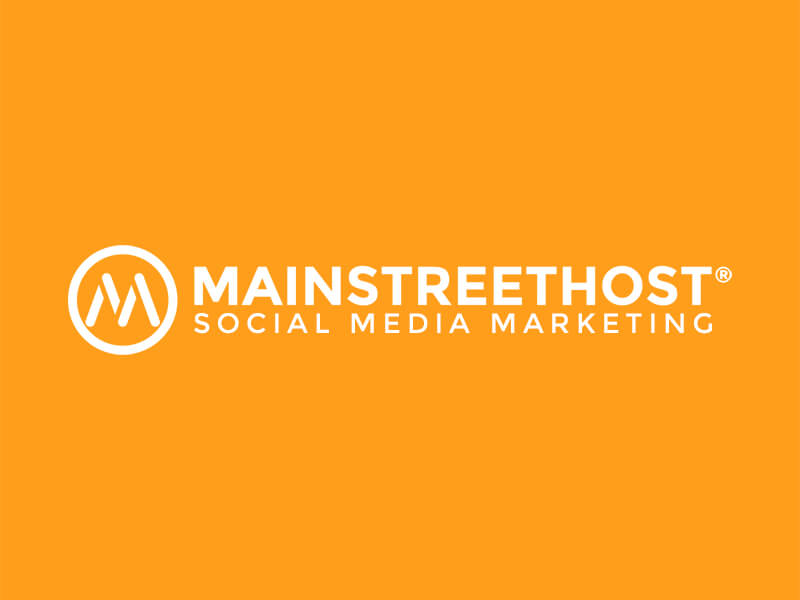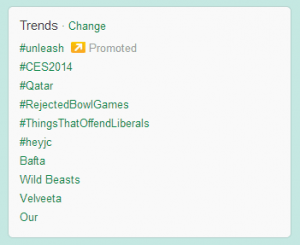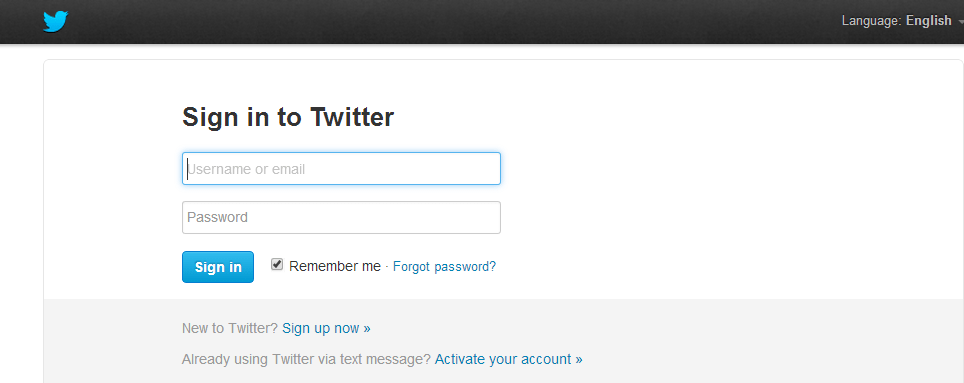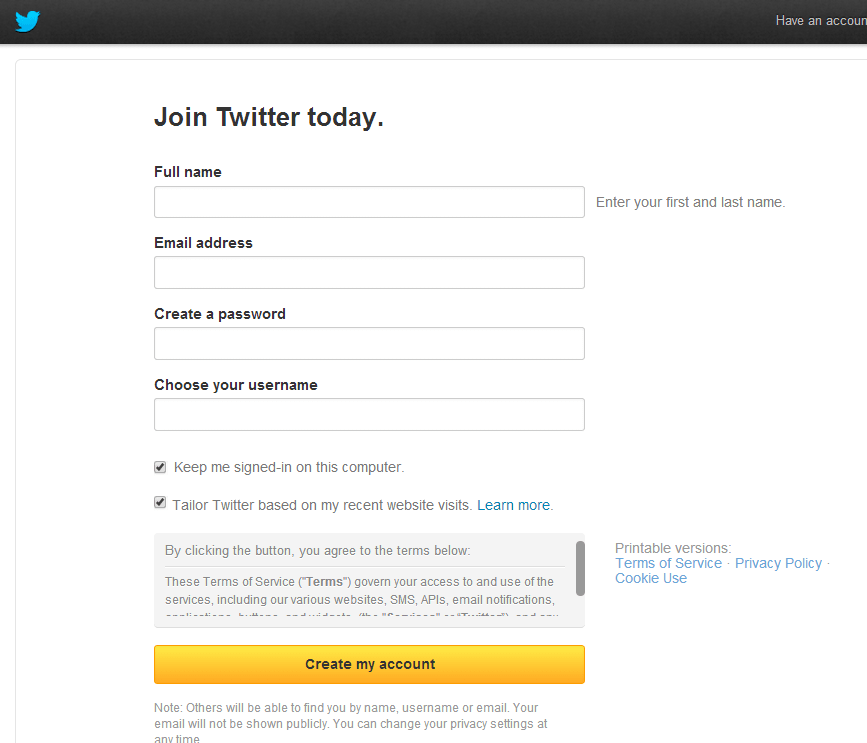More often than not – and mostly from more mature generations – I get the question, “what is Twitter and why should I be on it? While I could go on for days explaining the many benefits of being on Twitter, unless you grasp the core idea/concept behind this far-reaching social network, the rest will make no sense.
The third largest social media network, Twitter is the “buzz generator” of the social media world. Often the place where people go for late-breaking news and updates, Twitter is ideal for any business, especially if that’s where your audience is. (I’m sure you’re wondering if your audience is even on Twitter, and to that I say, sign up and find out!)
But first, here’s a guide to being on Twitter – why you should be on it, what you should post, when you should post, how to build a following, who you should be following and how to sign up.
Why Should I Be on Twitter?
Being on social media has become necessary for all businesses. With 645,750,000 users, Twitter is quickly growing, which means it’s more than likely your audience, or at least some of your audience, is on Twitter.
Whether you’re a business-to-business (B2B) or business-to-consumer (B2C) business, Twitter is one avenue for connecting with your audience. It provides an opportunity for users to discover and follow various businesses and industries for the latest news, links to blog posts, and opinions.
Like other social media platforms, being on Twitter will help create and increase your brand’s awareness, while establishing your brand/organization as a thought-leader and expert in your industry. It’s also a great way to get your company’s personality out there, which is another way to build a following and attract new customers and followers.
What Should I Post on Twitter?
Like any social network, what you post (Tweet) on Twitter should be tested. Post different types of information and articles, and see what gets the most response. With promoted posts, you can increase the reach of your post and track its success through Twitter analytics.
With a 140-character limit, word choice is extremely important on Twitter. Twitter’s one network where your followers only have the headline to entice them to click on the link – so you need to make it count!
Now, more than ever, Twitter is encouraging image sharing. Think about it: would you be more likely to click on a Tweet with an image attached or one without an image? Use images to your advantage – after all, a picture is worth 1000 words!
For example, if I were a local cupcake bakery, (let’s call my business Courtney’s Cupcakes) I would post pictures of my creations and inspiration, along with articles and blog posts about cupcakes, baking, event planning, weddings, the food/beverage industry, and other local businesses.
Monitor Twitter to see what works for other brands that are similar to your company. At Courtney’s Cupcakes, we search Twitter to see what other cupcake shops and bakeries are doing and use that as inspiration for our own Tweets and even blog posts. While I recommend using other people’s and businesses’ Tweets and blog posts as inspiration, there’s a lot to be said about being different and standing out from your competition. Success, especially on social media, hinges on fresh, interesting content that’s never been seen before. This kind of content is what captivates people and entices them to come back for more; this will also help build your Twitter following.
Social listening, which is eavesdropping on your customer’s social media conversations, will also help determine what your audience is saying and interacting with. This will help you determine the kind of content you should create and share.
Another extremely useful approach to observe what’s being talked about on Twitter is through hashtags. The idea behind hashtags is to draw attention to a specific word, phrase, or idea in your Tweet. Hashtags are searchable within Twitter and you can see what’s trending to join in on the conversation, or even create a conversation. Below is an example of trending topics, which often change throughout the course of a day.
When posting, you should re-tweet, favorite and respond to your competition and other people’s/businesses’ tweets. Nobody wants to see a Twitter-feed where you only talk about yourself- that’s not what people are looking for on social media.
It will take some time to figure out a Twitter posting strategy and what works best for your business, but honestly, that’s all part of the fun!
When Should I Post?
Just as you should test what you post, you’ll also want to test when you post, including the day of the week and time of day. Unlike some networks where posting/sharing content once works great, with Twitter I suggest you post the same tweet multiple times a day/week/month and even year.
In a blog post from The New York Times, “How Many Times Can You Tweet the Same Tweet,” Twitter icon Guy Kawasaki shared this advice: “Repeat your tweets four times, eight hours apart! If you do it that way you will always catch Pacific Coast prime time, which is early evening.”
Twitter is constantly updating; something you post one second could be at the bottom of your followers’ feeds within the next second. If you’re wondering how you’re going to keep up with posting multiple times a day, the easiest way is to schedule Tweets through a social monitoring tool such as TweetDeck or HootSuite. Check out this list of popular Twitter tools to assist in monitoring, scheduling and tracking your Tweets.
How Do I Build a Twitter Following and Who Should I Be Following?
For Twitter to be a successful social media outlet, a strong following is crucial. So, how do you build that following? First off, find people in your industry and follow them. Follow businesses and well-known thought-leaders in your industry. If you’re a local business, follow area businesses, news sources and local individuals. Reach out to these people and ask them to follow you in return.
The best way to build your following is to promote and share content that people want to see and share. Social media is all about figuring out what people want and what they will share. The more often you share things people enjoy and love, the more likely they will follow you and share your content, which will increase your exposure.
Don’t forget: share content from others. If others see you sharing and commenting on their tweets and posts, they’re more apt to follow you and share what you have to say. After all, they aren’t called social networking sites for nothing!
At Courtney’s Cupcakes, we follow a variety of local businesses as well as local news stations and outlets. This not only helps us keep up to date with area happenings, but there’s a lot to be said about supporting and endorsing area businesses, and many times it works both ways. We also follow other cupcake shops throughout the country and industry-related brands, including event planners, bakeries, and wedding/bridal companies to name a few.
Keep in mind: you’re not going to build your Twitter following overnight. These things take time, but the effort is worth it.
How Do I Set up Twitter?
Now that you have a better idea of why you should be on Twitter, what, when and how to post on Twitter, and how to build your following, you just have to set up your Twitter profile.
The steps below should help you get started, then the real fun begins!
Sign up for Twitter at https://twitter.com/signup.
When filling out the form below, sign up as your business. For example, I would put “Courtney’s Cupcakes” in the full name section and then I will choose a username (handle) that reflects my business; my username is going to be BuffaloCupcakes.
Your full name will be displayed on Twitter feeds, followed by your handle. There is a limit of characters for a username, so you might have to get creative. Just make sure your handle is recognizable and aligns with your brand. For example, my display name and handle will look like this on Twitter:
Courtney’s Cupcakes @BuffaloCupcakes
Keep your handle short. Not only will it be easier for people to remember, but it will also encourage people to mention you in their Tweets, without sacrificing too many characters (they only have 140 characters to work with).
Once you sign up, Twitter will guide you through setting up your profile and finding people to follow. Fill out your profile to completion, including your location and the bio section. And don’t forget to upload a profile picture; I recommend using your company logo.
After your profile is complete, it’s time to Tweet!
Was this social media guide to Twitter helpful? Let us know in the comments below, along with any questions or comments you might have.






